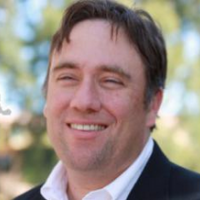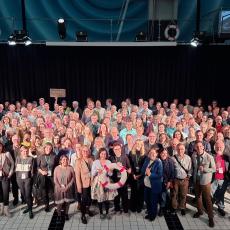The Swiss Seven-Headed Executive Is a "Magic Formula." Let's Try It at Home.
This column is co-published with Zócalo Public Square.
Are you worried that not a single one of the people in the 2026 race for California governor is up to the job?
Me, too.
So, why not elect all of them governor?
OK, not all two dozen declared candidates, a motley assortment of our fellow Californians, from Pasadena’s Korean American evangelist Ché Ahn to Leo Zacky of Zacky Farms.
But I would suggest—given the weakness of the contenders for a job so big that it resembles a second American presidency—allowing the top seven finishers in next year’s elections to share the job.
If this idea sounds crazy, it’s only because, for far too long, Americans have submitted mindlessly to the lazy authoritarianism of oneness. We can conceive of only one president, one governor, one God, one greatest quarterback of all time (my take: it’s that Brady kid from San Mateo).
That’s too bad. Because power-sharing is a superpower, albeit an untapped one in this country. And we need it now, with Congress functionally dead, and with a dictatorial White House claiming power to decide everything from the cancellation of constitutional rights to the late-night-TV lineup
In response to American authoritarianism and a violently divided public, California would be wise to embrace alternative models that decentralize power. The best path would be to adopt the multi-party democracy of European countries like Denmark or Sweden, which can produce governments in which three or four parties split control of the executive branch.
Barring that, California should embrace the governing model of Switzerland, a political cousin of California since the Golden State adopted Swiss-style direct democracy in 1911. The Swiss executive branch is run by the Federal Council. The presidency rotates every year among its seven members, who each manage one of seven federal departments. Since 1959, the council has been divided the same way among four coalition parties—with the top three parties getting two seats each, and the fourth party getting one—an arrangement so stabilizing that the Swiss call it “the magic formula.”
By tradition, the Federal Council is a collegial body that decides things jointly, with all seven individuals standing by decisions publicly, even when they disagree in private. It’s hard to argue with the results. Switzerland is one of the world’s richest and most democratic countries. And it hasn’t gotten itself into a war since the Battle of Marignano in 1515.
Such a set-up would be exactly what California needs right now. For one thing, a seven-headed executive would be depolarizing. If the top seven candidates in today’s polls were the top seven finishers in next year’s elections, two Republicans—commentator Steve Hilton and Riverside County Sheriff Chad Bianco—would be on the seven-member governing council. This would give voters of both parties real statewide representation and force Republicans to participate in governing, rather than just whining about Democrats.
Splitting up the job would also cover for the weaknesses of the leading candidates.
Not one of them has national stature. None is drawing even 20 percent in the polls. If you read the policy statements and papers of the declared candidates, as I did, you’ll find no broad or compelling vision for the state, beyond making life here more affordable. And even those candidates with public executive experience—former L.A. Mayor Antonio Villaraigosa and former U.S. Health and Human Services Secretary Xavier Becerra—are not known as strong administrators.
So, why not throw the whole lot into the governorship, in hopes that at least some of them grow into executive work?
A council of governors could also solve for the problem of replacing Gavin Newsom, the most peripatetic governor in our history, who starts a couple of initiatives every day. It might take 70 governors to sort through the thousands of programs and other policy flotsam that Newsom will leave behind when he departs office at the end of 2026.
Objections? Some of you will say that a seven-headed executive will make things too complicated. But we need more complicated leadership for our complicated state government.
Indeed, our state bureaucracy of a quarter-million employees and 200-plus agencies and commissions is simply too big for one governor to hold accountable. It’d be nice to have seven governors to split up oversight.
Our state is too big for one governor, too. So each of our seven governors could oversee a different one of California’s seven regions (North State, Central Valley, Central Coast, Bay Area, Inland Empire, greater Los Angeles, and greater San Diego).
Other doubters may protest that shared executive power is foreign to California, but that’s bunk. Our county boards of supervisors share executive responsibilities among their five members. Our city councils routinely rotate the role and responsibility of mayor. One of our most powerful unions, Unite Here Local 11, which represents hotel workers, has operated in recent years with three co-presidents. (I’m tempted to add that Jerry West and Pat Riley were once announced as co-coaches of the Lakers, but that experiment didn’t last long.)
Troubled places around the world have seen the advantages of power-sharing. “When there is debate, there are solutions,” said Atifete Jahjaga, who as the first non-partisan and first female president of Kosovo put back together a country divided by war and political crisis. She added:
“When there is no sharing of power, no rule of law, no accountability, there is abuse, corruption, subjugation and indignation.”
Right now, Californians face a torrent of abuse, corruption and subjugation from the U.S. government, and we rightly fear the loss of the rule of law.
To escape these threats, we’ll have to pull together and do things we’ve never done before. And we’ll need as many governors as we can get.




